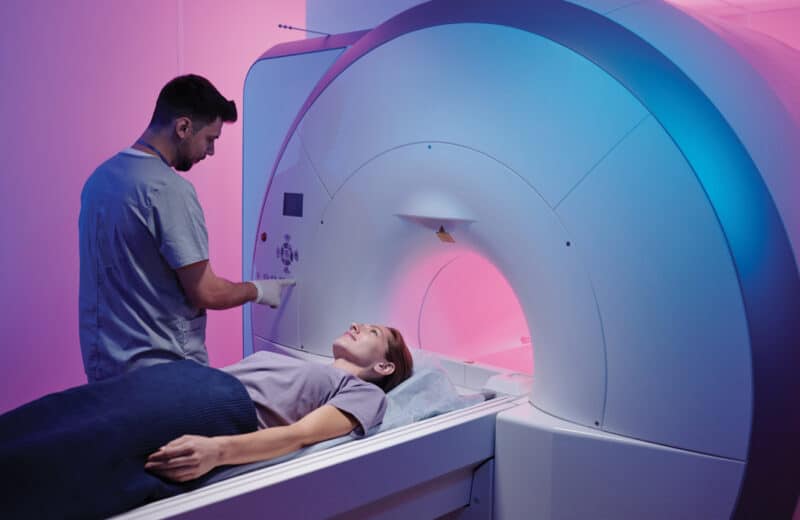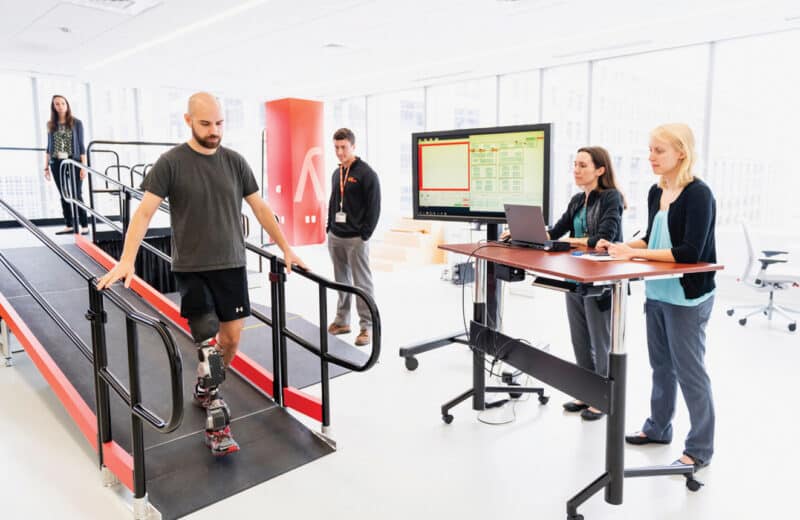Chicago’s tree ambassadors teach residents about the crucial role trees play in health and health equity.
In North Lawndale, on Chicago’s southwest side, Annamaria Leon will be talking with her neighbors about one thing this fall: not crime, not politics…but trees. As a neighborhood tree ambassador with training from the city, she educates others about the benefits of trees and encourages locals to request that the city plant trees in their parkways.
“We get the opportunity to know one another again, listen to their concerns about trees, and other issues they may be dealing with. The Tree Ambassador program promotes community cohesion,” Leon says.
The inconsistent tree canopy across Chicago reflects the city’s health inequities. While Chicago’s average canopy coverage is 16%, it falls far shorter in underserved communities, varying from 4% to 10%, according to Chicago’s 2022 Climate Action Plan. Data shows the range of tree canopy averages from as high as 36% along the Chicago River in Lincoln Square and 31% in areas of Lake View, to as low as 3% in parts of the Near West Side close to the Kennedy Expressway.
Healthy trees, healthy people

Lydia Scott, director of the Morton Arboretum’s Chicago Region Trees Initiative, says tree ambassadors like Leon play a vital role in improving their communities’ health and environment.
“Typically, tree canopy is lower in under-resourced communities. Many don’t know the benefits and services trees provide and why trees should be a priority,” Scott says. “By having neighbors go to neighbors and share why trees are important, they can help their neighbor submit tree requests into the 311 system, the City of Chicago will be able to expedite the planting of trees in the neighborhoods.”
Trees bring vital health benefits to communities — from respiratory health to mental health, social health and environmental health.
“Trees filter certain air pollutants to improve air quality and decrease asthma symptoms,” says Raed Mansour, director of Environmental Innovation at the Chicago Department of Public Health (CDPH).
From a social and mental health perspective, trees encourage people to go outside, and provide natural areas where neighbors can socialize. “Research shows that trees lower blood pressure, reduce stress and anxiety, and may reduce violence,” Mansour says.
Trees fight climate change, too, by absorbing carbon dioxide from the air and soaking up water to prevent floods. They also protect against the urban heat island effect by providing shade while cooling the surrounding air, Mansour says. “This is especially important to those with certain chronic diseases, who have a higher risk of hospitalization and death during extreme heat events.”
Beginning in October, Leon will begin going door-to-door monthly to discuss the health benefits of trees with Lawndale residents, as one of 33 city-trained tree ambassadors. The 55-year-old says she values this work because “to be a Tree Ambassador gives me and the other ambassadors the ability and the power to contribute and make a real impact in the beautification and well-being in our communities.”
Planting an urban forest
More tree ambassadors will soon join their ranks, Mansour hopes. He holds monthly meetings with the Chicago Tree Equity Working Group to discuss strategies, policies, and research. The group also shares best practices for Chicago’s urban canopy, focusing on priority communities and the Tree Ambassador program. Using an equity-based approach, Our Roots Chicago — a city initiative born from Chicago’s 2022 Climate Action Plan — focuses on 11 priority neighborhoods — largely concentrated on the city’s west, southwest, and south sides.
Neighborhoods with areas that have a tree canopy below 16% are:
- Armour Square
- Austin
- Back of the Yards
- Brighton Park
- East Garfield Park
- Greater Grand Crossing
- Humboldt Park
- Little Village
- McKinley Park
- Near West Side
- North Lawndale

“While our aim is to increase Chicago’s tree canopy and see more trees in all parts of the city, we are prioritizing these 11 community areas to address this tree deficit,” says City Environmental Policy Advisor Gaby Wagener-Sobrero.
Our Roots involves 70 organizations large and small. Participants come from the City of Chicago, such as the Mayor’s Office, the Sustainability Office, and CDPH; as well as community groups, such as Mi Villita Neighbors and Imani Village; and larger environmental nonprofits, including The Nature Conservancy and Openlands.
The initiative’s goal: to utilize $46 million in city funding to plant 75,000 trees by 2026. While Mansour is waiting to report numbers until the end of the fall planting season, a spokesperson for the Department of Streets and Sanitation told the Chicago Tribune in June that the city had planted about 2,000 trees since Arbor Day in April.
Remember, though: The city can’t plant trees on private property unless individual homeowners request a tree through 311, which can take up to two years to fulfill. Without a request to 311, the Department of Streets and Sanitation and Bureau of Forestry will not plant a tree. That’s why Leon and the Tree Ambassador program are key — helping residents submit these requests.
To learn more or to become a tree ambassador, visit chicago.gov/ouroots or email ourroots@cityofchicago.org.














